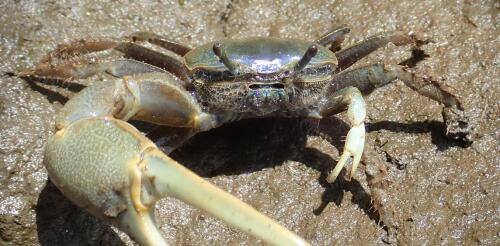Massachusetts
Nine years ago, I stood on the muddy banks of the Great Marsh, a salt marsh an hour north of Boston, and pulled a thumb-sized crab with an absurdly large claw out of a burrow. I was looking at a fiddler crab – a species that wasn’t supposed to be north of Cape Cod, let alone north of Boston. As it turned out, the marsh I was standing in would never be the same. I was witnessing climate change in action. The Great Marsh is on the Gulf of Maine, the piece of the Atlantic that extends approximately from Cape Cod, Massachusetts, to Nova Scotia, Canada. The marshes along the gulf are critical breeding sites for many bird species. But the water there is warming faster than almost anywhere else on the planet. And with warming water comes warm-water species. Marsh grass is essential for both habitat and adapting to sea-level rise in the Great Marsh. David S. Johnson Maryland blue crab and black...
Cranberries are a staple in U.S. households at Thanksgiving – but how did this bog dweller end up on holiday tables? Compared to many valuable plant species that were domesticated over thousands of years, cultivated cranberry (Vaccinium macrocarpon) is a young agricultural crop, just as the U.S. is a young country and Thanksgiving is a relatively new holiday. But as a plant scientist, I’ve learned much about cranberries’ ancestry from their botany and genomics. New on the plant breeding scene Humans have cultivated sorghum for some 5,500 years, corn for around 8,700 years and cotton for about 5,000 years. In contrast, cranberries were domesticated around 200 years ago – but people were eating the berries before that. Wild cranberries are native to North America. They were an important food source for Native Americans, who used them in puddings, sauces, breads and a high-protein portable food called pemmican – a carnivore’s version of an ene...

